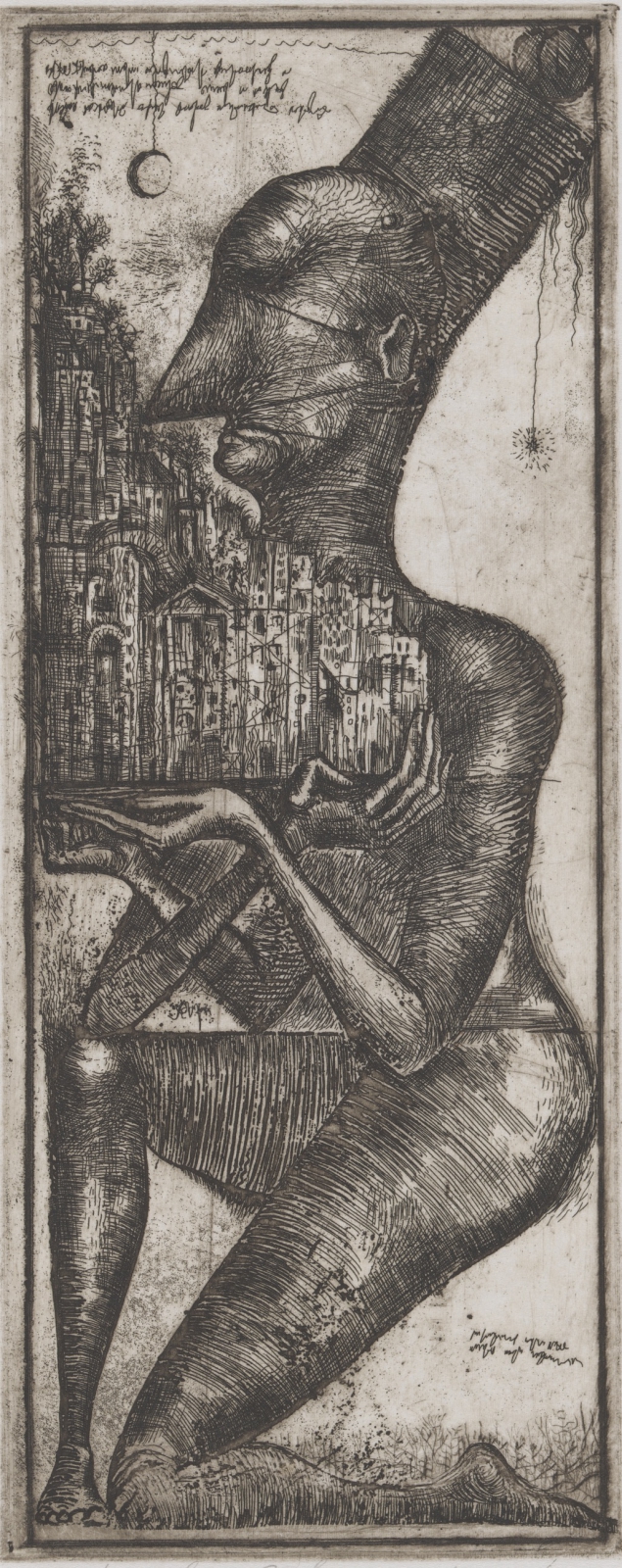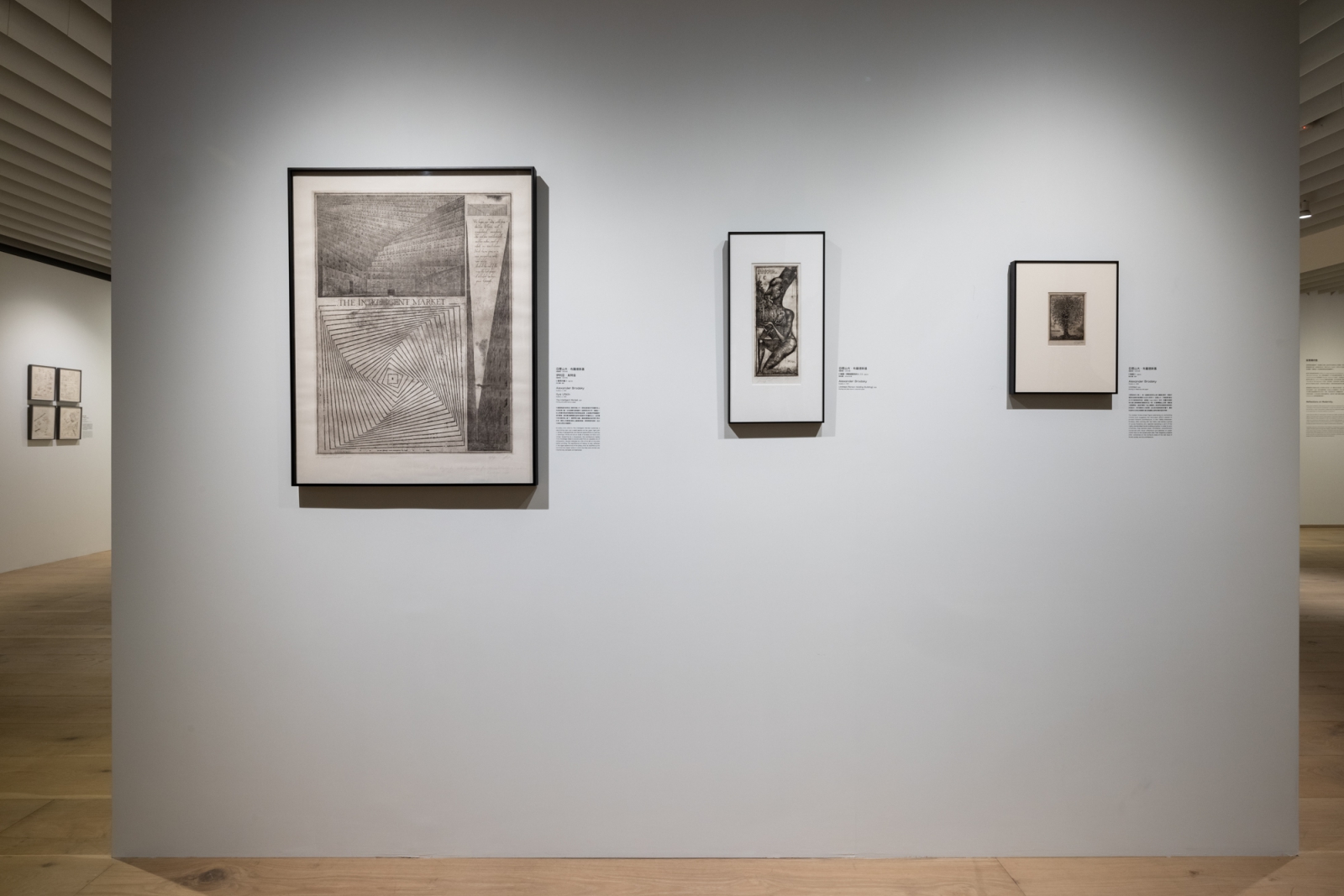
Alexander Brodsky, Untitled (Person Holding Building), 1984. © Alexander Brodsky. From the Collection of the Alvin Boyarsky Archive.
|
亞歷山大.布羅德斯基 《無題(捧著建築物的人)》,1984年 |
Alexander Brodsky Untitled (Person Holding Building), 1984 |
沉鬱陰晦的三臂人,將一座韻味悠然的山坡小鎮擁在懷中,暗喻守護歷史建築背後需要付出巨大的努力。亞歷山大.布羅德斯基在80年代經常與伊利亞.烏特金(Ilya Utkin)合作,同屬於拒絕臣服於僵化蘇聯建築的建築研究生一群,於是轉戰紙上空間,讓創造力盡情釋放。這些所謂的「紙上建築師」將他們的視覺思辨與探討訴諸紙本,而非實際的工地現場,並在其充滿奇想的計畫中,盡訴對當時末日將近的蘇聯社會及其建築之垂死狀態的猛烈抨擊。
The somber three-armed figure embracing an enchanting hillside town suggests the Herculean effort needed to protect historic architecture. In the 1980s Alexander Brodsky, often working with Ilya Utkin, was among a group of young Russians who rejected becoming a part of the rigidly standardized Soviet building practice. In order to work creatively, they became paper architects—practitioners concerned with visual reflections and debates on paper rather than on the construction site. Their imaginary projects often commented on the moribund state of the last days of Soviet society and its architecture.

圖:《聚變:AA倫敦建築聯盟的前銳時代》展場,圖由左至右為《聰明市集》、《無題(捧著建築物的人)》、《無題》
|
亞歷山大.布羅德斯基 伊利亞.烏特金 《聰明市集》,1987年 |
Alexander Brodsky Ilya Utkin The Intelligent Market, 1987 |
布羅德斯基和烏特金《聰明市集》中,既有迷宮般的平面圖和右上角的剖面小圖,也有連續的透視圖和一些說明性的文字,描繪出一座以無盡的廊道和壁龕構成的無限綿延結構。此結構如同陵墓設計裡的隱喻,意味著知識需要從過時的困惑年代待重新出土,並於壓印前在蝕刻版上留下一層薄薄的油墨,讓這道隱喻成為肉眼可見的訊息。銅版上的線條故意加上磨損與斑點,表現時間的痕跡,由此也映射出歷史的重要性。
Brodsky and Utkin’s The Intelligent Market combines a labyrinthine plan and a small section at the upper right with a series of perspectives and textual explanations to portray a seemingly infinite structure made of endless corridors and niches. Appearing as a mausoleum, the architecture implies that knowledge needs to be exhumed from an obsolete era of obfuscation, visually indicated by a film of ink left on the plate before printing. The significance of history is also reflected in the aged appearance of the piece, which is amplified by the fact that the copper plate on which the lines were etched was intentionally abraded and blemished.
